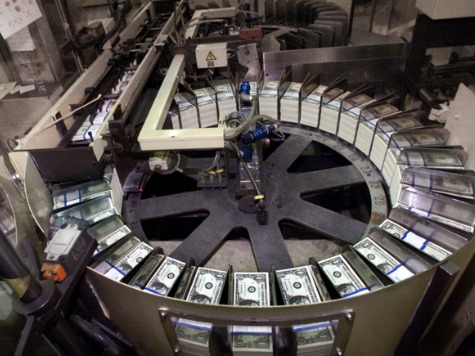
Ever since the economy failed to return to strong economic growth following the federal stimulus and action by the Federal Reserve, liberal commentators have insisted that government “austerity” is to blame and has acted like a brake on potential economic growth.
With federal spending continuing to increase and the Fed pumping almost $1 trillion a year into the economy, many liberals have argued that state and local governments have pursued “austerity” measures that have blocked growth. It is a myth.
In FY 2007, the last full budget year before the recession hit, total state expenditures were $1.425 trillion. Last year, in FY 2013, total state expenditures were $1.719 trillion, an increase of 20% since before the recession. This amount is higher than the simple growth in population and inflation.
This isn’t just a matter of states catching up their spending as the effects of the recession wear off. Total state spending increased every year during both the recession and “recovery,” except for one year, FY 2012. That year, total state spending fell 1.7% from the year before, largely because of the phase-out of federal stimulus spending. Even then though, total state spending was up 15% over pre-recession levels. Moreover, this trim in state spending followed increases of 3.8% and 3.4% the two years before.
One can strip out the impact of federal spending on states by looking at just state spending on its “General Fund.” That covers all state spending from its own sources of revenue and on its own services, including assistance to local governments. In FY 2007, total state General Fund spending was $451 billion. This year, FY 2014, states have appropriated $721 billion in General Fund spending, a massive 60% increase in spending since before the recession.
Had state General Fund spending simply kept place with inflation and population growth, i.e. a modest form of austerity, state GF spending would be over $160 billion less a year than it is now.
Since the official end of the recession in June 2009, economic growth as been, at best, anemic. Economic forecasters are regularly revising downward their estimates of GDP growth. Millions of Americans remain unemployed or have left the workforce, and those receiving government benefits, e.g. food stamps, are at an all-time high.
These conditions don’t exist because of some dramatic pull-back in government spending. Not only has government not cut its absolute spending, its annual growth continues at near historical levels. Perhaps we ought to try austerity before we knock it.

COMMENTS
Please let us know if you're having issues with commenting.